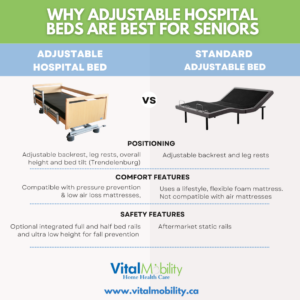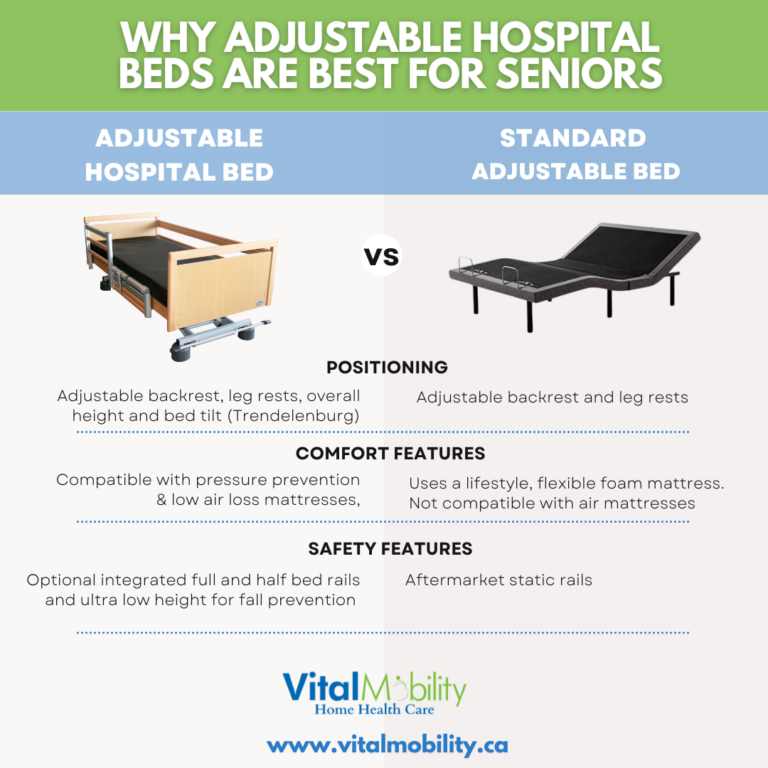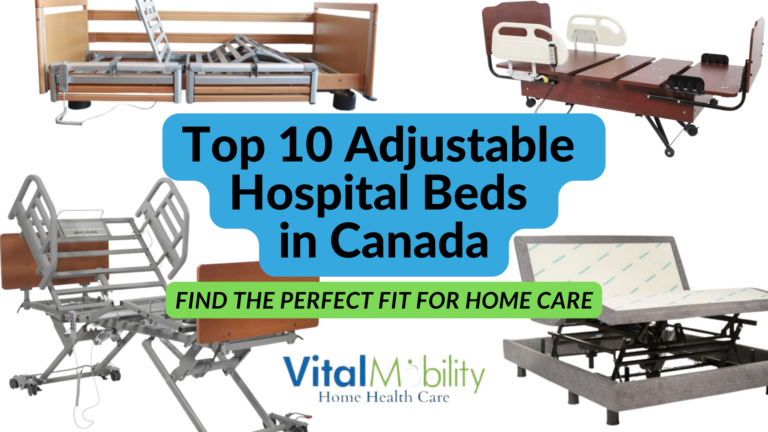Hospital beds for Dementia and Alzheimer’s patients have a unique set of needs. The unpredictability of those conditions makes it challenging to foresee the features caregivers will need. Ensuring the patient’s and caregiver’s safety is most important. So, how you choose hospital beds that match those needs?
People living with advanced dementia may exhibit overactive behaviour, which may jeopardize their safety. Falls and accidents can take place quickly and unpredictably. On the other hand, other individuals may show very little movement and activity, possibly leading to the development of pressure issues on the skin.
What we do know, is that most patients living with memory loss will benefit from being cared for in a home setting. Familiarity creates a sense of security in an otherwise confusing world.
This handy guide will provide you with three tips to do just that. It will help you decide on a hospital bed for dementia or Alzheimer’s patients. This information will help you make an informed, educated decision as you conduct your research on how to choose the right Hospital bed for them.
1. Choose a “Low” Hospital Bed
Regular home hospital beds have a minimum height of approximately 14 inches. Add five inches for a therapeutic mattress and the patient will be positioned at a minimum of 19″ from the floor. That is at the lowest point. On the other hand, Low Hospital Beds have the ability to be lowered to 7-9 inches from the ground.
Dementia patients tend to experience their most challenging times during the sunset and nighttime hours. With a lower sleeping surface, even if the caregiver dozes off, the patient will be too low to experience a damaging fall. Low hospital beds can prevent falls that lead to hip fractures, concussions and more. In addition, even if the person tries to correctly get up from bed, it will be very challenging for them to do so from such a low height.
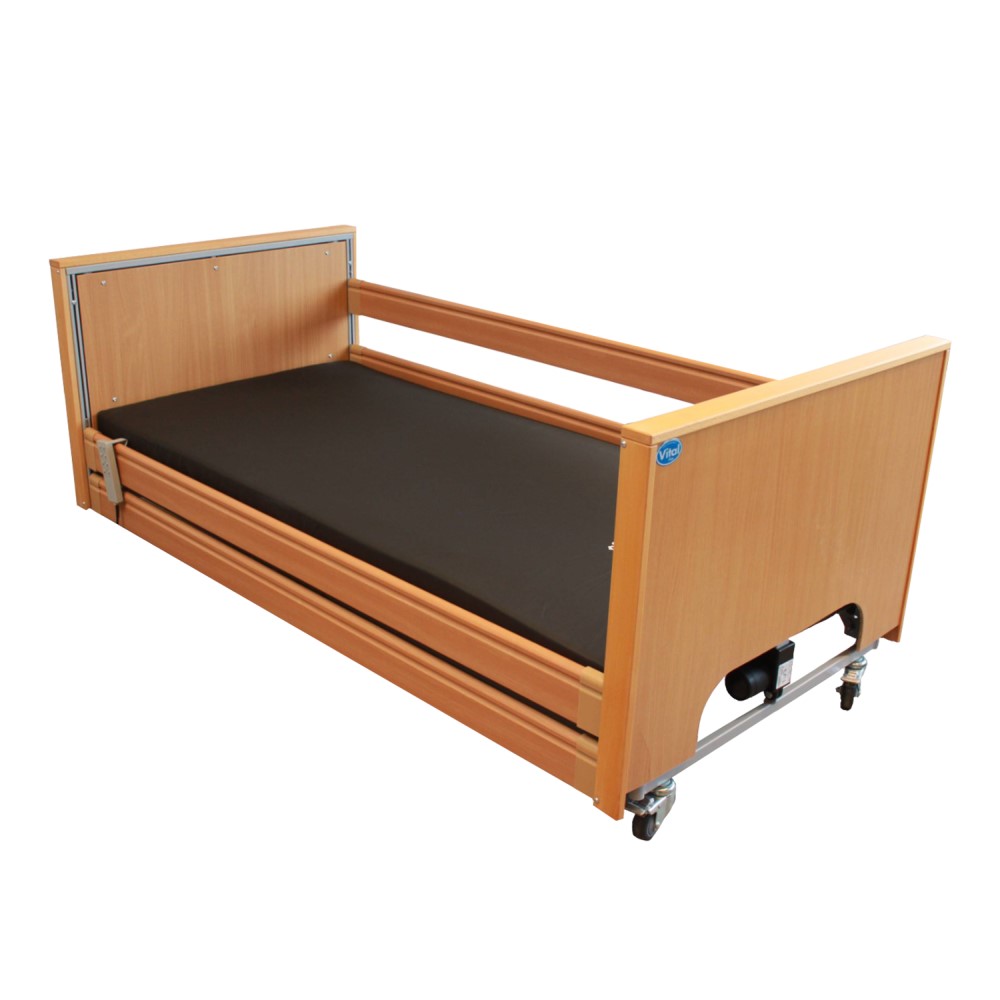
2. Choose a Hospital Bed with Profiling Options
Dementia patients can become uneasy during their most challenging times. They experience both psychological and physical discomfort that is hard to address on a regular bed. A home hospital bed, particularly if it has a Profiling function, will make it easy for the caregiver to quickly reposition the patient. This convenient function is able to gradually raise and lower the backrest and leg-rests of the bed at the same time. It helps the patient find a more comfortable position and continue to adapt to their needs.
3. Add a Low Air Loss Mattress for Hospital Beds for Dementia Patients in Advanced Stage
As dementia progresses, so does the inability for the patient to move around independently. This leads to extended time spent on the bed without much mobility. When a person becomes mostly bed-ridden, pressure sores and ulcers on the skin become a big concern. Moisture builds up between the body and the mattress, beginning to break down otherwise heathy skin.
Substituting a foam or gel pressure prevention mattress with a Low Air Loss Mattress can help address those pressure sores. It will also prevent the development of new ones. Their self-regulating air bladders will inflate and deflate at different time intervals to keep the patient’s skin dynamic. In addition, a thin layer of air will escape the top layer of the air mattress to keep the patient’s skin dry and healthy. It will also help heal existing pressure wounds.
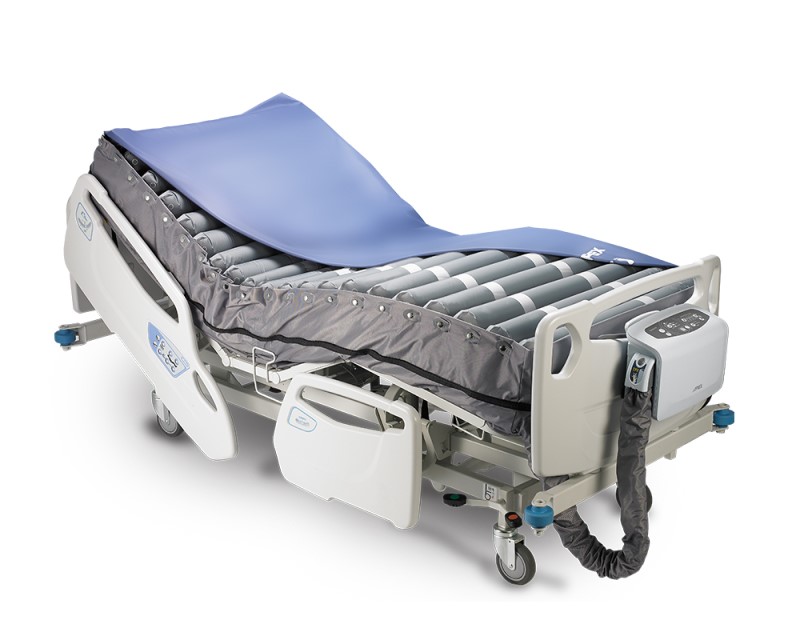
Decreasing the risk of falls, keeping the patient comfortable and making sure that their skin stays healthy are key ways of helping dementia patients, and their caregivers. Vital Mobility Medical Supplies offers a variety of hospital bed and air mattress options to help you address those needs.
Hospital beds are a crucial piece of medical equipment for keeping both the patient caregiver healthy. The home health care pros at Vital Mobility can help you learn about the different types of beds available to make sure that decision is right.




